
Knight Lore is a 1984 action-adventure game developed and published by Ultimate Play the Game, and written by company founders Chris and Tim Stamper. The game is known for its use of isometric graphics, which it further popularized in video games. In Knight Lore, the player character Sabreman has forty days to collect objects throughout a castle and brew a cure to his werewolf curse. Each castle room is depicted in monochrome on its own screen and consists of blocks to climb, obstacles to avoid, and puzzles to solve.
Vortex Software was a video game developer founded by Costa Panayi and Paul Canter in the early 1980s to sell the game Cosmos which Panayi had developed for the Sinclair ZX81. They converted the game to the ZX Spectrum, but due to the low sales of the ZX81 version they licensed the game to Abbex.
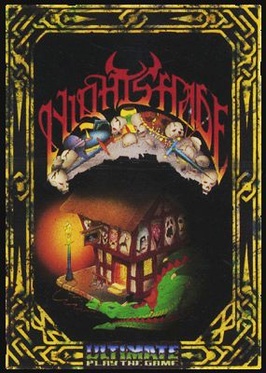
Nightshade is an action video game developed and published by Ultimate Play the Game. It was first released for the ZX Spectrum in 1985, and was then ported to the Amstrad CPC and BBC Micro later that year. It was also ported to the MSX exclusively in Japan in 1986. In the game, the player assumes the role of a knight who sets out to destroy four demons in a plague-infested village.

Rick Dangerous 2 is a platform game developed by Core Design for the Amiga, Atari ST, Amstrad CPC, ZX Spectrum, Commodore 64, and MS-DOS. It was released in 1990 and published by Micro Style as a sequel to Rick Dangerous.

Tornado Low Level is a multidirectional flight game developed by Costa Panayi and published in 1984 by the company he co-founded, Vortex Software. The game was first released for the ZX Spectrum, and later ported to the Amstrad CPC and Commodore 64.

Mercs, originally released as Senjō no Ōkami II in Japan, is a run and gun video game developed and published in arcades by Capcom in 1990. It is a sequel to the 1985 arcade video game Commando. While not as successful as its predecessor, Mercs was well received by critics and was a moderate commercial success. It was followed by Wolf of the Battlefield: Commando 3 in 2008, a downloadable game.
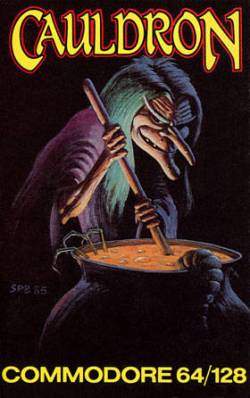
Cauldron is a video game developed and published by British developer Palace Software in 1985 for the ZX Spectrum, Commodore 64, and Amstrad CPC home computers. It contains both platform game and horizontally scrolling shooter sections. Players control a witch who aims to become the "Witch Queen" by defeating an enemy called the "Pumpking".

Midnight Resistance is a side-scrolling run and gun game produced by Data East and released in arcades in 1989. Midnight Resistance is set in a dystopian future where the player controls a member of a resistance movement who goes on a mission to rescue his kidnapped family from a drug kingpin.

Cauldron II: The Pumpkin Strikes Back is a video game developed and published by British developer Palace Software as a sequel to their 1985 game Cauldron. The 2D platform game was released in 1986 for the ZX Spectrum, Commodore 64, and Amstrad CPC home computers. Players control a bouncing pumpkin that is on a quest of vengeance against the "Witch Queen". The roles of the two were reversed from the first game, in which the witch defeated a monstrous pumpkin.

Technician Ted is a platform game for the Amstrad CPC and ZX Spectrum home computers that was written by Steve Marsden and David Cooke and published in 1984 by Hewson Consultants.
The ZX Spectrum's software library was very diverse. While the majority of the software produced for the system was video games, others included programming language implementations, Sinclair BASIC extensions, databases, word processors, spread sheets, drawing and painting tools, and 3D modelling tools.

Vixen is a platform game published by Martech in 1988 for the Amiga, Amstrad CPC, Atari ST, Commodore 64, MS-DOS, and ZX Spectrum.
Costa Panayi is a former computer game programmer active during the 1980s. He founded Vortex Software with Paul Canter, publishing games for the ZX Spectrum, Commodore 64 and Amstrad CPC.

Android Two is a shoot 'em up maze video game written by Costa Panayi and published by Vortex Software in 1983 for the ZX Spectrum and in 1985 for the Amstrad CPC. It is the sequel to Android One: The Reactor Run, released earlier in 1983.

Werewolves of London is a video game released in 1987 for the ZX Spectrum, Commodore 64 and the Amstrad CPC. It was released on a cassette with the Amstrad version on one side and the Spectrum version on the other, this scheme being referred to as "Flippy". The game used the same engine as Viz Design's other game Frankenstein Junior which was released by Codemasters in the same year. The game was released two years late and was as a budget title, as intended. Publisher Ariolasoft ceased trading and the game was subsequently released by Mastertronic. It was also released in Spain by Dro Soft.
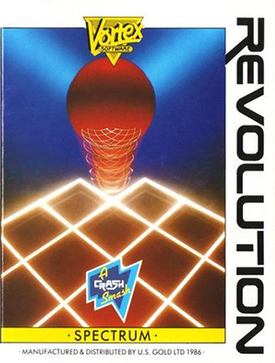
Revolution is an isometric 3D puzzle video game released by U.S. Gold in 1986 for the ZX Spectrum and Amstrad CPC. It was programmed by Costa Panayi and is a development of the earlier 3D games Highway Encounter and Alien Highway.

Alien Highway: Encounter 2 is an isometric action game released by Vortex in 1986 for the ZX Spectrum and Amstrad CPC. It was programmed by Mark Haigh-Hutchinson and is the sequel to Highway Encounter.
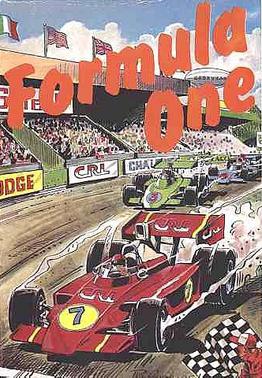
Formula One is a Formula One racing management video game published in 1985 by CRL Group PLC. It was developed by G.B. Munday and B.P. Wheelhouse for the ZX Spectrum, and converted to Amstrad CPC by Richard Taylor.
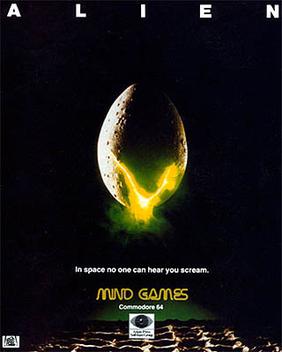
Alien is a 1984 hybrid strategy/adventure video game developed by Concept Software and published by Argus Press Software for the Commodore 64 and ZX Spectrum, and later ported for the Amstrad CPC in 1985. It is based on the science fiction horror film Alien.

Judge Dredd is a 1991 platform shoot 'em up video game based on the character of the same name. It was developed by Random Access and published by Virgin Mastertronic. It was released in Europe in 1991, for the Amiga, Atari ST, Commodore 64, and ZX Spectrum. Critics found the gameplay repetitive.
















